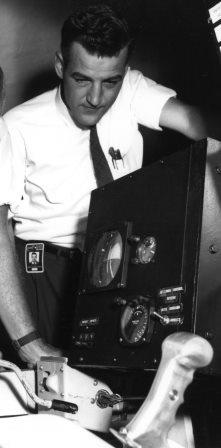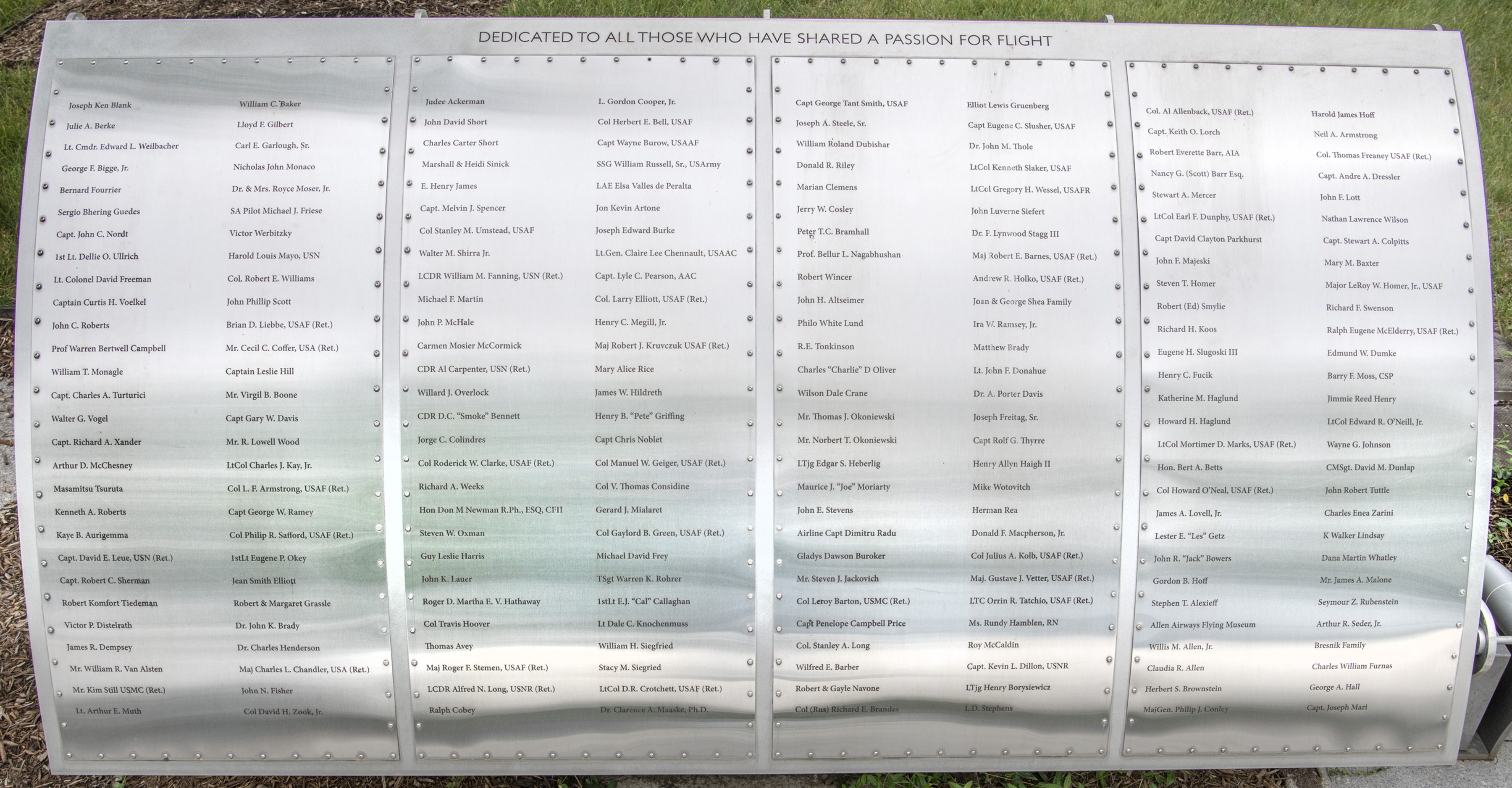Donald R. Riley

Foil: 23 Panel: 3 Column: 1 Line: 4
Wall of Honor Level: Air and Space Sponsor
Honored by:
Theresia R. Mares
Mr. Donald R. Riley, a career NASA engineer, contributed research in the fields of subsonic aerodynamics, orbital mechanics and simulation to aerospace programs including Gemini, Agena, Skylab and the Shuttle. Upon graduating from Pennsylvania State College in 1949 with a Masters Degree in Aeronautical Engineering, Mr. Riley joined NASA Langley Research Center in Hampton Virginia as an Aerospace Engineer in September of that year. After his retirement in 1995, he became a Distinguished Research Associate with NASA and continued his research.
Mr. Riley performed a number of simulator research studies on docking for the Gemini and Agena Space Vehicles. He made one of the first simulator studies of docking using a simulator of his own design. Later, he collaborated with ACD personnel in modifying the F-151 gunnery trainer for use as a docking simulator. Transformation of the gunnery trainer was complicated by the lack of information on how the components operated. It was largely through Mr. Riley’s efforts that the F-151 gunnery trainer became a valuable piece of general purpose simulation equipment. It was with this equipment, that he performed the research studies for the Gemini and Agena Space Vehicles. The simulator and these studies also provided astronaut training. The study provided a quantitative correlation of the results obtained with the fixed-base visual docking simulator and the moving-base rendezvous/docking simulator.
Mr. Riley contributed to the development of the Foot-Controlled Maneuvering Unit which was flown in Skylab. Simulation of the device was required for validation and for astronaut training. Although the unit was being developed by another Branch, Mr. Riley was asked to assist in the analysis of the unit and to assume full responsibility for assuring that the simulator would represent the unit in space flight. Mr. Riley’s in-depth knowledge of the visual simulator and its operational characteristics made him the only person at Langley that could perform the analysis in the required time frame. It was necessary to demonstrate the capability of the unit through a realistic six-degree-of-freedom simulation with proper visual cues. Although there was some concern with tumbling, Mr. Riley demonstrated that this could be handled with astronaut training. Because of his expertise in subsonic aerodynamics of intersecting airfoils, Mr. Riley was consulted first by Schweizer Aircraft Corporation and then by the FAA in regard to tail loads of the Schweizer 1-35 all metal glider. Civil air regulations did not specify loadings for T-tails. Mr. Riley subsequently performed some theoretical calculations to determine the span loads and resulting stability derivatives for several isolated tail assemblies in sideslip and steady roll. The research assisted Schweizer Aircraft in obtaining FAA certification of this glider.
Transport lags in a simulator destroy its fidelity as a true simulation of an airplane. It is crucial, therefore, to determine how much delay can be tolerated in simulating specific aircraft and alternatively, to determine what aircraft can be accurately simulated in a given simulator with its inherent time delays. Because of the wide acceptance of simulators as research tools as trainers by the Armed Forces and Airlines, these questions became of great interest. Mr. Riley contributed heavily to three fundamental studies related to these problems. The results served as guidelines which the Armed Services have used in specifications of simulator hardware and is of importance in determining the complexity and cost of simulation equipment required to perform a given task.
During the firth Shuttle Air Launch Landing Test, the vehicle encountered a pilot-induced oscillation (PIO). It was conjectured that this PIO tendency was at least partly caused by control system transport lags associated with the Shuttle digital control system. Because of his work in transport lags, Mr. Riley responded to a request from the Johnson Space Center to determine if reducing the transport lag would alleviate the PIO problem. The results showed that time delays could be a contributing factor to PIO tendencies, and that reduction in time delays would be of some benefit. The results were reported to JSC for consideration in control system design changes.
Mr. Riley was involved in developing an accurate mathematical model to simulate the stall/departure flight dynamics of the Yankee airplane with and without wing leading-edge modifications. The work involved judicious use of wind-tunnel and analytically derived aerodynamic data to construct the model and then detailed validation of the model by systematic comparison of computed motions with actual flight data. This study contributed to defining the start-of-the-art capability in predicting light aircraft stall/departure motions. Mr. Riley also served as project engineer for a free-flight model of the General Dynamics E-7 STOVL configuration. In this capacity, he conducted state force tests and free-flight tests.
Mr. Riley also conducted research on developing an accurate simulation of one of NASA’s High Speed Civil Transport configurations, including different engine types and high lift aerodynamic improvements. This simulation is being used to assess the airport community noise levels and piloting performance of the configuration when advanced takeoff flight procedures are used.
Mr. Riley’s lifelong dedication to aviation and aerospace research continued for more than 50 years. Through the course of his career, he authored more than forty research studies and publications. A list of his publications is attached. In addition to his lifelong dedication to his work, Mr. Riley was also a devoted husband and father of six.
Wall of Honor profiles are provided by the honoree or the donor who added their name to the Wall of Honor. The Museum cannot validate all facts contained in the profiles.
Foil: 23
All foil images coming soon.View other foils on our Wall of Honor Flickr Gallery
